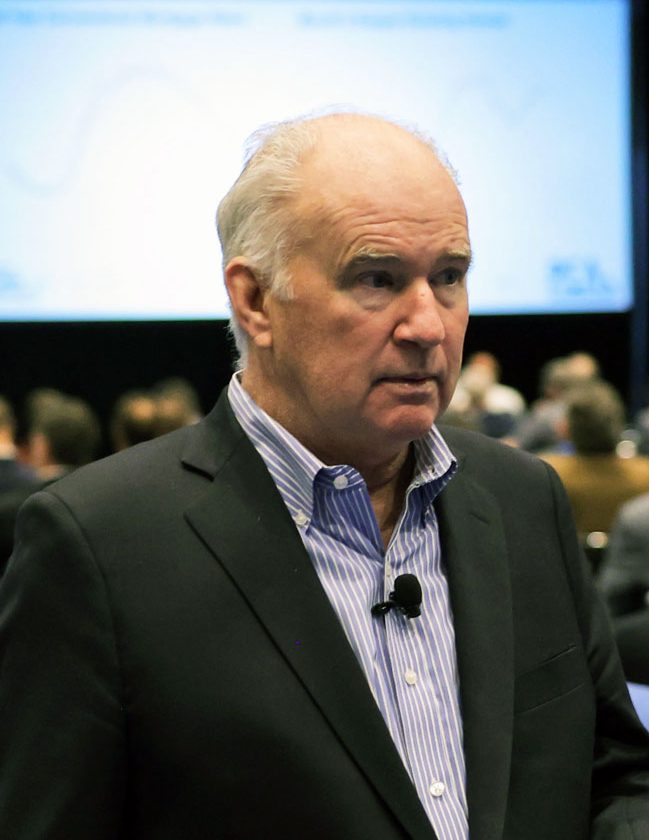According to the U.S. Census Bureau, construction spending during December 2022 was estimated at a seasonally adjusted annual rate of $1,809.8 billion, 0.4% (± 0.8%) below the revised November estimate. The December figure is 7.7% (±1.2%) above the December 2021 estimate.
The value of construction in 2022 was $1,792.9 billion, 10.2% (±0.8%) above the $1,626.4 billion spent in 2021.
In December, the estimated seasonally adjusted annual rate of public construction spending was $382.7 billion, 0.4% (±1.3%) below the revised November estimate of $384.4 billion.
- Highway construction was at a seasonally adjusted annual rate of $117.3 billion, 1.1% (±3.5%) above the revised November estimate of $116.0 billion.
- Educational construction was at a seasonally adjusted annual rate of $84.2 billion, 0.3% (±2.3%) below the revised November estimate of $84.4 billion.
The value of public construction in 2022 was $363.6 billion, 4.8% (±1.3%) above the $347.0 billion spent in 2021.
- Highway construction was $108.9 billion, 8.6% (±3.5%) above the $100.2 billion in 2021.
- Educational construction in 2022 was $80.2 billion, 2.6% (±2.6%) below the 2021 figure of $82.3 billion.
Spending on private construction was at a seasonally adjusted annual rate of $1,427.1 billion, 0.4% (±0.5%) below the revised November estimate of $1,432.9 billion.
Residential construction was at a seasonally adjusted annual rate of $857.2 billion in December, 0.3% (±1.3%) below the revised November estimate of $860.0 billion. Nonresidential construction was at a seasonally adjusted annual rate of $570.0 billion in December, 0.5% (±0.5%) below the revised November estimate of $572.9 billion.
The value of private construction in 2022 was $1,429.2 billion, 11.7% (±1.0%) above the $1,279.5 billion spent in 2021. Residential construction was $899.1 billion, 13.3% (±2.1%) above the 2021 figure and nonresidential construction was $530.1 billion, 9.1% (±1.0%) above the $485.8 billion in 2021.
Although rising builder sentiment indicates a turning point for housing later this year, lackluster single-family production in January is a sign that the housing sector faces further challenges, as elevated mortgage rates and high construction costs continue to put a damper on the market.
Overall housing starts decreased 4.5% to a seasonally adjusted annual rate of 1.31 million units, according to a report from the U.S. Department of Housing and Urban Development and the U.S. Census Bureau.
The January reading of 1.31 million starts is the number of housing units builders would begin if development kept this pace for the next 12 months. Within this overall number, single-family starts decreased 4.3% to an 841,000 seasonally adjusted annual rate. The multifamily sector, which includes apartment buildings and condos, decreased 4.9% to an annualized 468,000 pace.
“Housing construction weakened in January as ongoing affordability conditions fueled by high mortgage rates and building material costs challenged the market,” said Alicia Huey, chairman of the National Association of Home Builders (NAHB) and a custom home builder and developer from Birmingham, Ala.
“And while a recent two-month upturn in builder sentiment indicates a turning point for single-family construction could take hold in the months ahead, policymakers need to fix the supply chain for building materials to ensure builders can add the additional inventory the housing market desperately needs,” Huey concluded.
On a regional basis compared to the previous month, combined single-family and multifamily starts were 42.2% lower in the Northeast, 25.9% lower in the Midwest, 7.3% higher in the South and 5.5% higher in the West.
Overall permits increased 0.1% to a 1.34 million-unit annualized rate in January. Single-family permits decreased 1.8% to a 718,000-unit rate. Multifamily permits increased 2.5% to an annualized 621,000 pace.
Permits were 7.8% lower in the Northeast, 1.7% higher in the Midwest, 3.0% higher in the South and 4.6% lower in the West, compared to the previous month.

